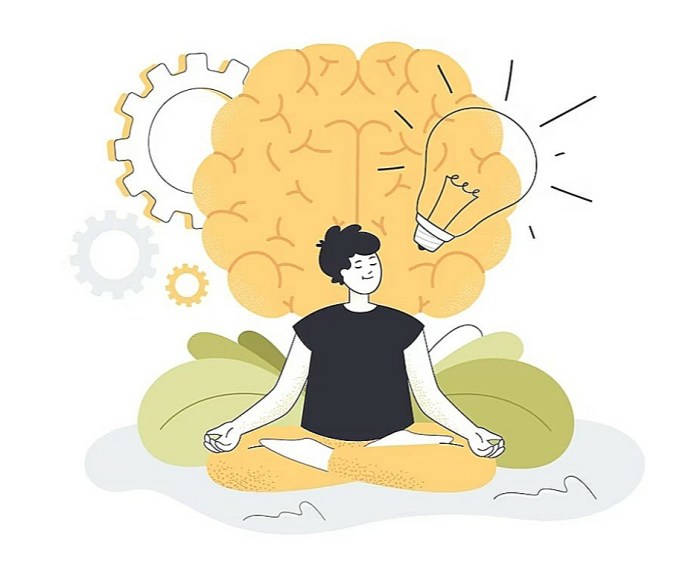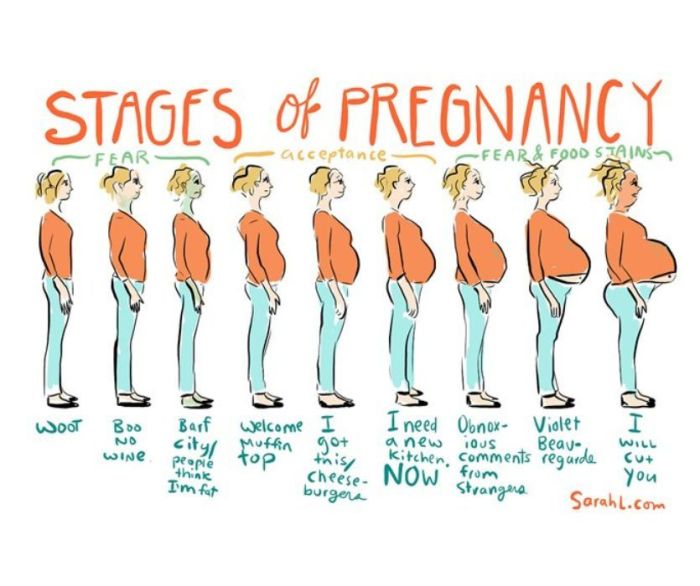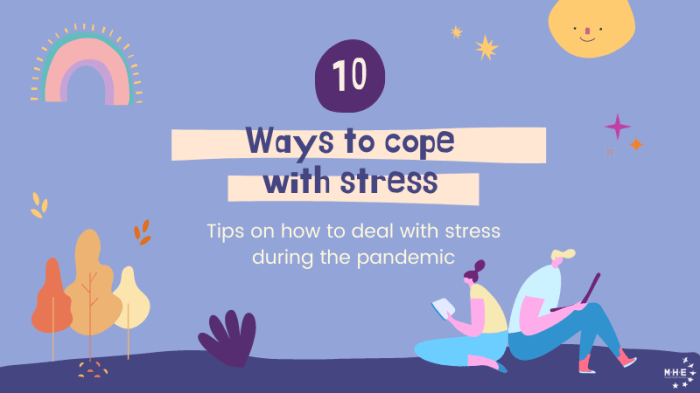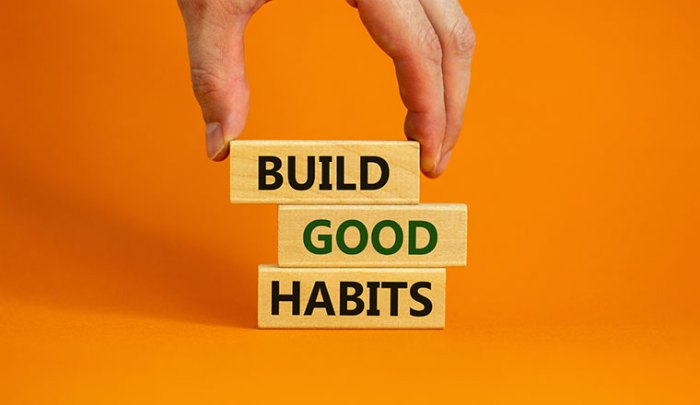How to cope with stress now? This guide dives deep into understanding stress, from its triggers to its impact on your well-being. We’ll explore practical techniques for immediate relief and long-term management, plus strategies for building resilience. We’ll also cover the importance of self-care and seeking support when you need it.
From identifying the sources of stress in your life, like work pressures or relationship conflicts, to understanding the physical and emotional symptoms, this guide will equip you with actionable steps. We’ll cover everything from deep breathing exercises to time management techniques and boundary setting. You’ll find specific examples, actionable steps, and a case study to illustrate how these strategies work in real-world scenarios.
Understanding Stressors

Stress is a ubiquitous part of modern life, impacting our physical and mental well-being. Recognizing the sources of stress and understanding how our bodies react is the first step in managing it effectively. This section delves into the various stressors we face and their effects.Understanding the triggers and physiological responses to stress is crucial for developing effective coping mechanisms.
By identifying patterns and individual sensitivities, we can proactively address stressors and promote better mental and physical health.
Common Stressors in Modern Life
Stressors are diverse and can stem from various aspects of our lives. Identifying these sources is the first step in managing their impact.
- Work: Deadlines, heavy workloads, challenging projects, and interpersonal conflicts at work are common stressors. These can range from feeling overwhelmed by the demands of a job to navigating difficult colleagues or superiors. The pressure to succeed and maintain a certain standard can contribute significantly to stress levels.
- Relationships: Conflicts, communication breakdowns, and expectations in personal relationships can be significant sources of stress. Family issues, romantic relationship problems, or strained friendships can significantly impact emotional well-being.
- Finances: Financial worries, such as debt, job insecurity, or unexpected expenses, often contribute to stress. The pressure of maintaining a certain lifestyle or achieving financial goals can be particularly stressful, especially when faced with unexpected challenges.
- Health: Physical or mental health issues, including illnesses, injuries, or chronic conditions, can be major stressors. The emotional toll of managing a health problem can be considerable, along with the financial burden that often accompanies it.
- Lifestyle Factors: Factors like lack of sleep, poor diet, and excessive use of technology can contribute to stress levels. These lifestyle factors often create a vicious cycle, with stress exacerbating these habits, and vice versa.
Physiological Responses to Stress
The body’s response to stress is a complex physiological process. Understanding this response can help us recognize and manage stress more effectively.The body’s stress response, often referred to as the “fight-or-flight” response, involves the release of hormones like cortisol and adrenaline. These hormones prepare the body for immediate action, increasing heart rate, blood pressure, and breathing. While this response is beneficial in short bursts, prolonged exposure can lead to adverse health effects.
Chronic stress can lead to various health issues, including cardiovascular problems, weakened immune function, and mental health disorders.
Figuring out how to cope with stress right now? Sometimes, the best way to de-stress is to remember the simple joys in life, like the unique connection you share with someone special. Think about the 50 things only people who are true love would understand 50 things only people who are true love would understand. Ultimately, focusing on those positive connections can help you navigate any stressful situation more effectively.
Acute vs. Chronic Stress
Stress can be categorized as either acute or chronic, with distinct characteristics and impacts.
- Acute stress: This is a short-term stress response triggered by immediate demands or challenges. Examples include a sudden argument, a tight deadline, or an unexpected event. While potentially motivating, prolonged acute stress can still lead to exhaustion and negatively affect well-being.
- Chronic stress: This is a long-term stress response that persists over an extended period. It’s often associated with ongoing problems or situations, such as a demanding job, relationship difficulties, or financial strain. Chronic stress has more significant health implications, increasing the risk of various illnesses.
Comparing Stress Triggers and Impact
Different stress triggers affect individuals differently. Factors like personality, coping mechanisms, and past experiences influence the impact of stressors.
| Stress Trigger | Potential Impact on Individual A | Potential Impact on Individual B |
|---|---|---|
| Work deadlines | Increased anxiety and difficulty sleeping | Increased productivity and motivation |
| Relationship conflicts | Depression and social withdrawal | Increased emotional resilience and strengthened communication skills |
| Financial concerns | Increased risk of developing health problems | Increased focus and drive to improve financial situation |
| Health issues | Fear and feelings of helplessness | Increased appreciation for life and determination to maintain health |
Recognizing Stress in Yourself
Stress, a ubiquitous part of modern life, manifests in various ways. Understanding how stress impacts you personally is the first step towards effective management. Recognizing the signs and symptoms is crucial for early intervention and developing healthy coping mechanisms. This section will delve into the common emotional, physical, and behavioral symptoms of stress, offering methods for self-assessment and tools for tracking your stress levels over time.
Emotional Symptoms of Stress
Emotional responses to stress can range from mild discomfort to severe distress. These reactions are often intertwined with individual experiences and coping mechanisms. Common emotional symptoms include irritability, anxiety, sadness, feelings of overwhelm, difficulty concentrating, and a decreased sense of enjoyment. These emotional symptoms can significantly impact relationships, work performance, and overall well-being.
- Irritability is a frequent emotional response to stress, characterized by a heightened sensitivity to perceived annoyances. This can lead to quick temper outbursts and strained relationships.
- Anxiety, a feeling of worry or unease, often arises from perceived threats or challenges. It can manifest as restlessness, difficulty sleeping, or excessive worrying.
- Sadness or depression can stem from prolonged stress and a sense of hopelessness. It can be accompanied by loss of interest in activities, fatigue, and changes in appetite.
Physical Symptoms of Stress
Stress can manifest in various physical ways. Recognizing these signs is crucial for understanding the impact of stress on your body. Common physical symptoms include headaches, muscle tension, fatigue, changes in appetite, sleep disturbances, and digestive issues. These symptoms can be subtle or pronounced, but their presence often indicates the need for stress management strategies.
- Headaches, ranging from mild tension headaches to migraines, are common physical responses to stress. The tension in muscles associated with stress can trigger or worsen these headaches.
- Muscle tension, especially in the neck, shoulders, and back, is another frequent physical symptom. This can lead to stiffness, pain, and discomfort.
- Changes in appetite, from overeating to loss of appetite, are frequently associated with stress. This disruption can lead to weight fluctuations and other health concerns.
Behavioral Symptoms of Stress
Behavioral changes often accompany stress. These alterations in routine and habits can be indicators of underlying stress. Common behavioral symptoms include changes in sleep patterns, increased use of substances (alcohol, nicotine, etc.), social withdrawal, procrastination, and difficulty making decisions.
- Changes in sleep patterns, including difficulty falling asleep, staying asleep, or experiencing restless sleep, are often associated with stress. This can impact energy levels and cognitive function.
- Increased use of substances, such as alcohol or nicotine, can be a coping mechanism for stress. However, this is often not a sustainable or healthy approach to managing stress.
- Social withdrawal, avoiding social interactions, can be a response to the overwhelming nature of stress. This can lead to feelings of isolation and loneliness.
Self-Assessment Methods
Various self-assessment methods can help identify personal stress levels. These include journaling, mindfulness exercises, and stress-measuring apps. Self-reflection and awareness are key to understanding your stress triggers and responses.
- Journaling is a valuable tool for self-assessment. By recording thoughts, feelings, and stressors, you can identify patterns and triggers that contribute to your stress.
- Mindfulness exercises, like meditation, can help you become more aware of your present-state stress level. This awareness can aid in identifying and managing your reactions to stress.
- Stress-measuring apps can provide quantifiable data on your stress levels over time. These tools can help track patterns and identify potential triggers.
Stress Symptom Tracking Checklist
Regularly tracking stress symptoms can aid in identifying patterns and triggers. This checklist provides a framework for recording your experiences.
- Emotional Symptoms: Irritability, anxiety, sadness, overwhelm, difficulty concentrating, loss of enjoyment.
- Physical Symptoms: Headaches, muscle tension, fatigue, changes in appetite, sleep disturbances, digestive issues.
- Behavioral Symptoms: Changes in sleep patterns, increased substance use, social withdrawal, procrastination, difficulty making decisions.
- Triggers: Identify specific events, situations, or thoughts that trigger stress responses.
Stress Symptom Manifestations
The following table illustrates how stress symptoms might manifest differently in various individuals.
| Individual | Emotional Symptoms | Physical Symptoms | Behavioral Symptoms |
|---|---|---|---|
| Person A | Irritability, anxiety, feelings of inadequacy | Headaches, muscle tension, fatigue | Social withdrawal, procrastination |
| Person B | Overwhelm, sadness, difficulty concentrating | Changes in appetite, sleep disturbances, digestive issues | Increased substance use, avoidance |
| Person C | Restlessness, frustration, anger | Muscle tension, rapid heartbeat, shortness of breath | Increased activity, difficulty relaxing |
Immediate Stress Relief Techniques
Stress is a common experience, and having tools to manage it effectively is crucial for well-being. Learning immediate stress relief techniques empowers you to navigate stressful situations with greater composure and resilience. These techniques are not a cure-all, but they can provide vital support when stress arises.Effective stress management involves a multifaceted approach, encompassing understanding your stressors, recognizing stress signals, and employing practical techniques for immediate relief.
Feeling stressed? Try focusing on small, manageable steps to cope right now. One surprisingly effective method is to cut out sugary drinks. Did you know that ditching those fizzy sodas could lead to a whole host of improvements? For example, check out 12 amazing things will happen when you stop drinking soft drinks.
These benefits can then, in turn, help you feel less stressed in the long run. So, take a deep breath and start with one small change today. You’ve got this!
Immediate relief techniques provide a crucial first line of defense against escalating stress.
Deep Breathing Exercises
Deep breathing techniques are a cornerstone of stress reduction. They work by regulating the nervous system, calming the body’s “fight-or-flight” response, and promoting a sense of relaxation. The simple act of consciously controlling your breath can significantly impact your physiological state.
- Diaphragmatic Breathing: This technique focuses on engaging the diaphragm, the primary muscle of respiration. Inhale deeply, allowing your abdomen to expand, and exhale slowly, feeling your abdomen contract. Repeat this cycle, focusing on the smooth transition between inhalation and exhalation. This type of breathing can calm the nervous system quickly.
- Box Breathing: Inhale for a count of four, hold your breath for a count of four, exhale for a count of four, and hold your breath for a count of four. This rhythmic pattern helps establish a sense of control and stability during stressful moments. It is a simple, yet effective, way to regulate your breath and slow down your heart rate.
Mindfulness Techniques
Mindfulness involves paying attention to the present moment without judgment. It helps to detach from racing thoughts and worries, fostering a sense of calm and clarity.
- Mindful Observation: Pay attention to your senses—sights, sounds, smells, tastes, and textures. Notice what you are experiencing without getting carried away by thoughts or emotions. This practice can help ground you in the present.
- Mindful Movement: Engaging in activities like yoga or tai chi combines physical movement with mindfulness. Focusing on the sensations in your body as you move can be a powerful way to quiet the mind and reduce stress.
Progressive Muscle Relaxation
Progressive muscle relaxation involves systematically tensing and releasing different muscle groups in your body. This technique helps to release physical tension that often accompanies stress.
- Systematic Tensing and Relaxing: Begin by tensing a muscle group, like your hands, for a few seconds. Hold the tension, then release it, noticing the difference between the tense and relaxed states. Repeat this process with other muscle groups, moving from your hands to your arms, shoulders, and so on, until you reach your feet. Focusing on the physical sensations of tension and release can help ground you in the present and reduce physical stress.
Implementing Techniques in Different Situations
- Traffic Congestion: During a frustrating traffic jam, practice box breathing. Focus on the rhythmic pattern of your breath to anchor yourself in the present moment, reducing the feeling of frustration and anger.
- Meeting Pressure: Before a presentation, use mindful observation. Notice the sounds around you, the sensations in your body, and the thoughts that arise. This can help calm your nerves and center you.
Step-by-Step Guide: Box Breathing
- Find a comfortable position: Sit or lie down in a place where you can relax.
- Inhale slowly: Count to four as you inhale deeply, focusing on the sensation of your breath filling your lungs.
- Hold your breath: Hold your breath for a count of four, maintaining a steady pace.
- Exhale slowly: Count to four as you exhale slowly, feeling the air leave your lungs.
- Hold your breath: Hold your breath for a count of four.
- Repeat: Repeat this cycle of inhalation, holding, exhalation, and holding for several minutes.
Long-Term Stress Management Strategies
Long-term stress isn’t just a temporary inconvenience; it can significantly impact your physical and mental well-being. Developing effective long-term strategies is crucial for building resilience and maintaining a healthy lifestyle. These strategies go beyond immediate relief and focus on creating sustainable habits for managing stress over time.Proactive and consistent efforts in these areas can dramatically improve your overall quality of life by fostering a sense of control and reducing the negative impact of stressors.
Understanding your triggers and responses to stress is the first step towards implementing these long-term solutions.
Healthy Lifestyle Choices
Healthy lifestyle choices form the bedrock of long-term stress management. These choices are interconnected and contribute to overall well-being, making them essential components in a comprehensive stress management plan. Incorporating these elements into your daily routine fosters resilience and strengthens your ability to cope with stress.
- Nutrition: A balanced diet rich in fruits, vegetables, and whole grains provides the necessary nutrients for optimal physical and mental function. Limiting processed foods, sugary drinks, and excessive caffeine can significantly improve energy levels and mood regulation. Avoiding drastic or rapid changes to your diet, which may cause stress, is important. Instead, aim for gradual, sustainable improvements.
- Sleep: Adequate sleep is vital for stress management. Aim for 7-9 hours of quality sleep per night. Establishing a consistent sleep schedule, creating a relaxing bedtime routine, and ensuring a conducive sleep environment are key elements in optimizing sleep quality.
- Physical Activity: Regular physical activity releases endorphins, which have mood-boosting effects and can help reduce stress. Even moderate exercise like brisk walking, swimming, or cycling can significantly contribute to stress reduction.
Time Management and Prioritization
Effective time management is essential for reducing stress. Prioritizing tasks and creating realistic schedules helps you feel more in control of your day, minimizing the feeling of being overwhelmed.
- Prioritizing Tasks: Identify the most important tasks and tackle them first. Use methods like the Eisenhower Matrix (urgent/important) to categorize tasks and focus on high-priority items.
- Creating Realistic Schedules: Avoid over-scheduling. Allow for buffer time between appointments and tasks to accommodate unexpected delays or interruptions. Break down large tasks into smaller, more manageable steps.
Setting Boundaries and Communication
Setting healthy boundaries in relationships is crucial for managing stress. Effective communication about your needs and limits is essential for maintaining healthy relationships.
- Communicating Needs: Learn to clearly and respectfully communicate your needs and limits to others. Practice assertive communication techniques to express your feelings and expectations without being aggressive or passive.
- Setting Boundaries: Establish clear boundaries in your personal and professional life. This involves understanding what you’re willing and not willing to do, and communicating those boundaries to others.
- Examples of Setting Boundaries: Saying “no” to requests that exceed your capacity or time constraints, setting limits on social commitments, or establishing clear expectations for work responsibilities are examples of setting boundaries.
Incorporating Physical Activity
Regular physical activity plays a vital role in stress reduction. Incorporating it into your daily routine can significantly improve your physical and mental well-being.
- Finding Activities You Enjoy: Choose activities that you genuinely enjoy to make exercise a sustainable part of your routine. Exploring different options like dancing, hiking, or team sports can help you discover activities you find enjoyable.
- Scheduling Physical Activity: Treat exercise like any other important appointment. Schedule it into your daily or weekly calendar and stick to it as much as possible.
Seeking Support and Resources: How To Cope With Stress Now
Navigating stressful situations alone can feel overwhelming. Recognizing the need for support is a crucial step in managing stress effectively. Leaning on others, whether friends, family, or professionals, can provide a much-needed perspective and practical strategies to help you cope. This section explores the importance of seeking support and various resources available to help you through challenging times.Understanding that stress is a normal human experience and that seeking help is a sign of strength, not weakness, is paramount.
Reaching out to others is not a sign of failure, but rather a proactive step toward well-being.
Importance of Support Systems
Strong support systems are vital during times of stress. Having people who understand and care about you can significantly lessen the burden and provide a sense of security. These individuals offer a listening ear, practical advice, and a much-needed emotional outlet.
Types of Support Systems
A variety of support systems can provide assistance and comfort. Friends, family, and even community groups can offer emotional and practical support. Therapists, counselors, and support groups provide professional guidance and connection with others facing similar challenges.
- Friends: Close friends often provide a safe space to share concerns and feelings without judgment. They can offer a different perspective on a situation and sometimes, a listening ear is all you need to feel better.
- Family: Family members can provide practical support, like helping with tasks or providing financial assistance, alongside emotional support. Their love and understanding can often be a powerful source of strength.
- Therapists/Counselors: Licensed therapists and counselors are trained professionals equipped to help individuals understand and manage stress. They can provide evidence-based strategies, emotional support, and guidance to navigate challenging emotions.
- Support Groups: Support groups offer a platform for individuals facing similar situations to connect and share experiences. These groups can provide a sense of community and understanding, allowing you to feel less isolated.
Effective Communication of Needs
Clearly communicating your needs to loved ones is essential for receiving effective support. Expressing your feelings and concerns in a constructive manner can help them understand your situation better.
- Be Specific: Instead of saying “I’m stressed,” try “I’m feeling overwhelmed by work deadlines and worried about meeting them.” This gives your loved ones a clearer picture of the problem.
- Choose the Right Time and Place: Find a time when you and the person you’re talking to can have a calm and focused conversation. Avoid discussing sensitive issues when you’re both rushed or under pressure.
- Use “I” Statements: Focus on your feelings and needs rather than blaming others. For example, say “I feel anxious about the upcoming presentation” instead of “You’re making me anxious.”
- Active Listening: Encourage your loved ones to listen actively and respond with empathy. This creates a safe space for open communication.
Finding Professional Help, How to cope with stress now
If stress is significantly impacting your life and you feel you need professional support, seeking help from a qualified therapist or counselor is recommended. Mental health professionals can provide personalized guidance and strategies to address underlying issues contributing to your stress.
- Online Resources: Many websites and apps offer directories of licensed therapists and counselors. Use these resources to find professionals in your area or who offer online sessions.
- Your Doctor: Your primary care physician can provide referrals to mental health professionals or offer initial guidance.
- Insurance Coverage: Inquire about your insurance coverage for mental health services to understand your options and potential out-of-pocket costs.
Maintaining a Healthy Lifestyle
Stress often takes a toll on our physical well-being, and neglecting our health can exacerbate feelings of stress. Conversely, prioritizing a healthy lifestyle can significantly reduce stress and improve overall resilience. This involves mindful choices regarding diet, sleep, and exercise, all of which play crucial roles in managing stress effectively.A healthy lifestyle isn’t about perfection; it’s about making conscious, sustainable choices that support your body and mind.
Small, consistent changes can make a big difference in your stress levels and overall quality of life. By understanding the interconnectedness of these factors, we can create a strong foundation for managing stress and promoting well-being.
The Connection Between Stress and Diet
Diet plays a significant role in how our bodies respond to stress. Poor nutrition can weaken the immune system, making us more susceptible to stress-related illnesses. Conversely, a balanced diet provides the nutrients needed to support the body’s stress response mechanisms. Nutrient deficiencies can negatively impact energy levels, mood, and cognitive function, making stress management more challenging.
Healthy Eating Habits to Manage Stress
Prioritizing whole, unprocessed foods is key to managing stress through diet. These foods provide sustained energy, essential nutrients, and help regulate blood sugar levels, which can fluctuate with stress. Examples include fruits, vegetables, lean proteins, and whole grains. Limit processed foods, sugary drinks, and excessive caffeine, as these can lead to energy crashes and exacerbate stress.
- Include a variety of colorful fruits and vegetables in your daily meals. These provide vitamins, minerals, and antioxidants that support overall health and resilience to stress.
- Choose lean protein sources like fish, poultry, beans, and lentils. These provide essential amino acids for building and repairing tissues, crucial for recovery from stress.
- Prioritize whole grains like brown rice, quinoa, and oats. They provide complex carbohydrates that offer sustained energy, preventing the energy crashes that often accompany stress.
- Stay hydrated by drinking plenty of water throughout the day. Dehydration can worsen stress symptoms and fatigue.
The Importance of Sufficient Sleep
Adequate sleep is vital for managing stress. Sleep deprivation weakens the body’s ability to cope with stress hormones. A consistent sleep schedule regulates the body’s natural sleep-wake cycle, promoting better sleep quality. Establishing a regular sleep schedule and creating a relaxing bedtime routine can greatly improve sleep patterns and overall well-being.
Establishing a Regular Sleep Schedule
Aim for 7-9 hours of quality sleep per night. Consistency is key. Go to bed and wake up around the same time each day, even on weekends, to regulate your body’s natural sleep-wake cycle. Create a relaxing bedtime routine to signal your body that it’s time to sleep. This could include taking a warm bath, reading a book, or practicing relaxation techniques.
Avoid screens before bed, as the blue light emitted can interfere with sleep.
Benefits of Regular Physical Activity
Regular physical activity can significantly reduce stress levels. Exercise releases endorphins, which have mood-boosting effects and help reduce feelings of anxiety and tension. Incorporating physical activity into your daily routine can improve cardiovascular health, boost energy levels, and enhance overall well-being.
Building Resilience
Resilience is the ability to bounce back from adversity, stress, and trauma. It’s not about avoiding difficult situations, but rather about developing the strength and coping mechanisms to navigate them effectively. Building resilience is a crucial aspect of stress management, as it equips us with the tools to withstand challenges and emerge stronger on the other side. It’s a journey, not a destination, and consistent effort yields significant rewards.Developing resilience is not a passive process; it requires conscious effort and a willingness to learn and adapt.
It involves recognizing your strengths, understanding your weaknesses, and creating a supportive environment that fosters growth and well-being. Resilience is not just about surviving; it’s about thriving in the face of adversity.
Understanding the Role of Positive Self-Talk and Self-Compassion
Positive self-talk and self-compassion are integral components of building resilience. Negative self-talk can exacerbate stress and hinder progress, while self-compassion fosters a supportive and understanding inner dialogue. Cultivating a more positive internal narrative is essential for navigating stressful situations with greater ease and composure. By recognizing and challenging negative thoughts, and practicing self-compassion, individuals can create a more supportive inner environment.
Strategies for Developing Personal Resilience
Developing personal resilience involves implementing a variety of strategies, including building a strong support system, practicing mindfulness, and setting realistic goals.
- Building a Strong Support System: A robust support network provides emotional, practical, and social assistance. Connecting with friends, family, or support groups offers a vital network of individuals who can provide encouragement, empathy, and assistance during challenging times. This network can be a source of strength and validation when dealing with stressors. Sharing experiences and seeking advice from trusted individuals can foster a sense of belonging and reduce feelings of isolation.
Handling stress right now is key, especially when you’re juggling a million things. Learning to prioritize tasks and delegate effectively is crucial, just like successful entrepreneurs do. For instance, checking out resources on how to be a successful entrepreneur can offer valuable insights into time management strategies. Ultimately, taking care of your mental well-being is a vital part of any successful venture, be it a startup or just navigating your daily life.
- Practicing Mindfulness: Mindfulness involves focusing on the present moment without judgment. This practice can reduce stress by helping individuals become more aware of their thoughts, feelings, and bodily sensations without getting carried away by them. Regular mindfulness exercises can increase self-awareness, leading to improved stress management and emotional regulation. Techniques such as meditation, deep breathing exercises, and yoga can be beneficial.
- Setting Realistic Goals: Setting achievable goals and breaking down larger tasks into smaller, manageable steps can significantly reduce stress and promote a sense of accomplishment. This approach allows for progress to be tracked and celebrated, contributing to a positive self-image and enhanced self-efficacy.
Techniques for Cultivating a Growth Mindset
Cultivating a growth mindset is a crucial aspect of resilience. Individuals with a growth mindset believe that abilities and intelligence can be developed through dedication and hard work. This contrasts with a fixed mindset, which views abilities as static and unchangeable. Adopting a growth mindset allows individuals to embrace challenges, learn from setbacks, and persist in the face of adversity.
- Embrace Challenges: Viewing challenges as opportunities for growth rather than threats is a key element of a growth mindset. Instead of avoiding difficulties, individuals with a growth mindset see them as stepping stones towards personal development.
- Learn from Setbacks: Viewing setbacks as learning opportunities rather than failures is a key element of a growth mindset. Individuals with a growth mindset use setbacks as a catalyst for improvement and adaptation.
- Persistence in the Face of Difficulty: Sustained effort and perseverance are crucial components of a growth mindset. Individuals with a growth mindset understand that progress takes time and are committed to putting in the necessary work to achieve their goals.
Practical Applications
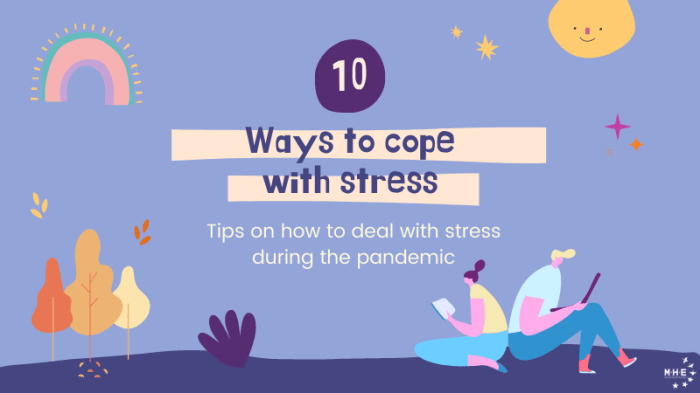
Putting stress management strategies into practice requires understanding how they work in real-life scenarios. This section offers concrete examples, case studies, and practical tools to help you integrate these techniques into your daily routine. We’ll explore how individuals successfully navigate stressful situations and provide a framework for personal application.
Real-Life Examples of Stress Management
Individuals have successfully managed stress through various methods. For instance, a teacher, facing increasing class sizes and administrative burdens, incorporated mindfulness exercises into her daily schedule. She found that even five minutes of focused breathing helped her regain composure and approach her workload with more clarity. Another example is a busy professional who prioritized their sleep and incorporated regular exercise.
These simple changes reduced overall stress levels, improving their focus and productivity.
Case Study: Sarah and the Deadline
Sarah, a freelance graphic designer, faced a critical deadline for a large project. The pressure mounted as the deadline approached, leading to anxiety and difficulty concentrating. Recognizing the signs of stress, Sarah employed several strategies. First, she broke down the project into smaller, more manageable tasks, creating a sense of progress. Second, she utilized a timer to work in focused intervals, taking short breaks to avoid burnout.
Finally, she utilized a relaxation technique she learned from a workshop, which helped her stay calm and focused. This combination of techniques allowed Sarah to meet the deadline and maintain her well-being.
Sample Weekly Schedule for Stress Management
A structured approach to incorporating stress management into your week can be highly effective. The following schedule offers a sample, adaptable to individual needs and preferences.
- Monday: Morning mindfulness meditation (10 minutes), mindful walking during lunch (15 minutes). Prioritize tasks for the week, delegating where possible.
- Tuesday: Exercise (30 minutes), journaling (15 minutes) to reflect on challenges and solutions.
- Wednesday: Prepare a relaxing bath (20 minutes) and a healthy meal. Schedule a support call or check-in.
- Thursday: Focus on one important task. Plan time for a stress-relieving activity (reading, hobby, or socializing).
- Friday: Review the week’s accomplishments, prioritize tasks for the next week.
- Saturday & Sunday: Relaxing activities. Spend time with loved ones, pursuing hobbies, or engaging in activities that promote well-being.
Applying a Stress Management Technique
Imagine you’re preparing for a presentation. Anticipation and anxiety are rising. To manage this, employ progressive muscle relaxation. Start by tensing and releasing the muscles in your feet, moving up your body (calves, thighs, abdomen, shoulders, face). This physical release can effectively counter the physiological responses associated with stress.
As you release tension in each muscle group, focus on the feeling of relaxation spreading throughout your body. This mindful physical practice can help calm your nerves and enhance your confidence.
Last Recap
In conclusion, managing stress effectively involves understanding your stressors, developing coping mechanisms, and prioritizing self-care. By learning to recognize and address your stress responses, you can cultivate resilience and maintain a healthier, more balanced life. This guide provides a roadmap for achieving that, offering a wealth of knowledge and actionable advice to navigate stress in the present and future.
Remember, managing stress is a journey, not a destination.
